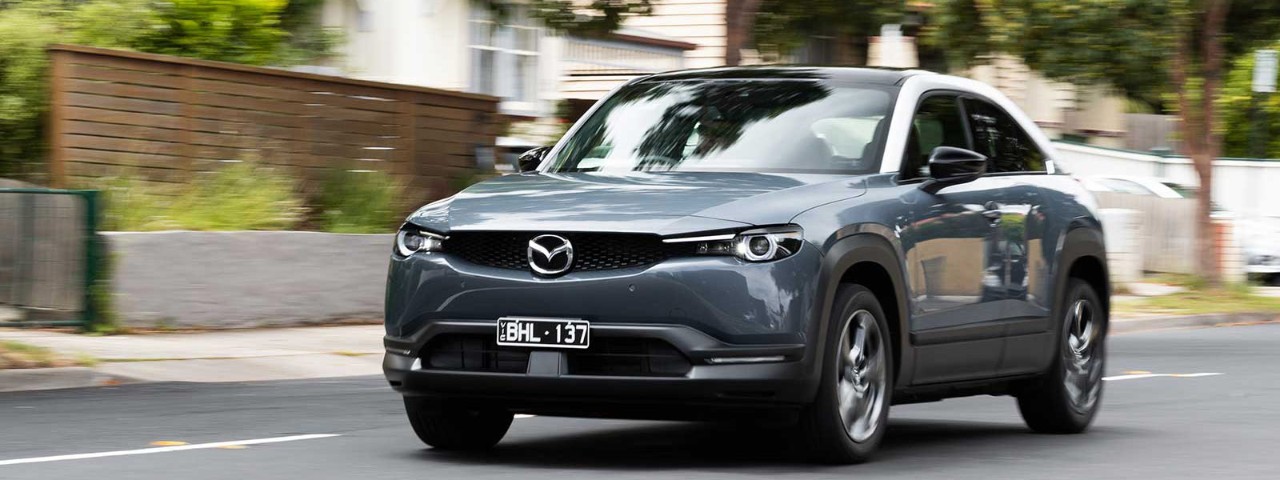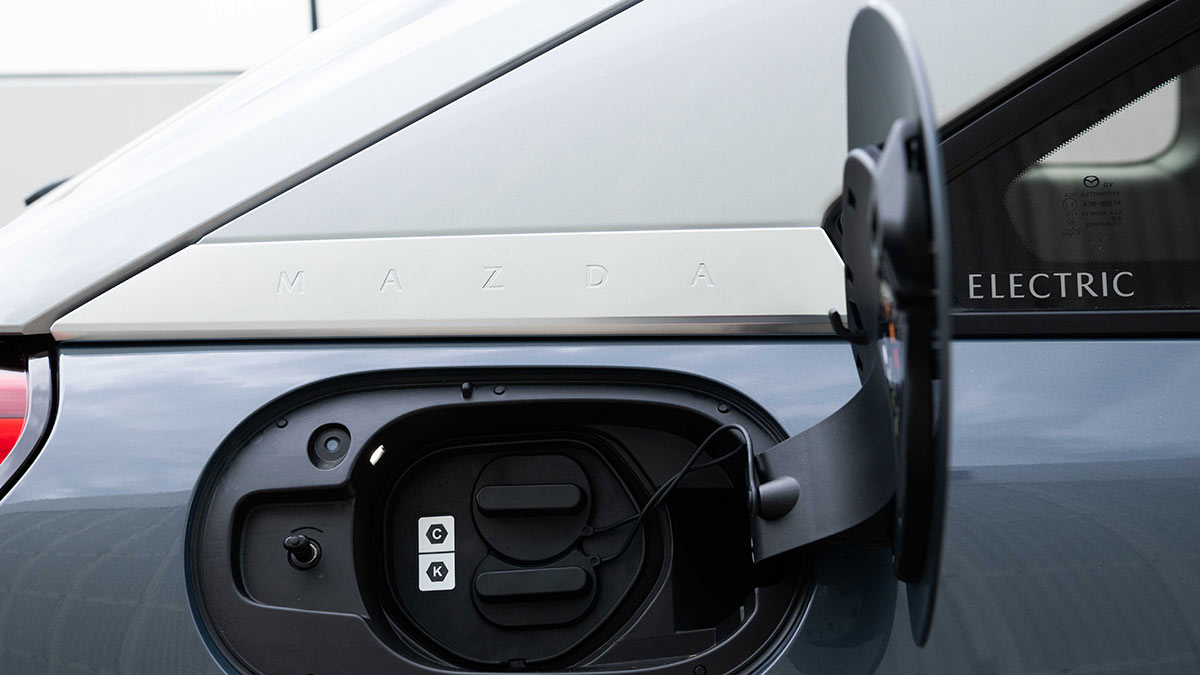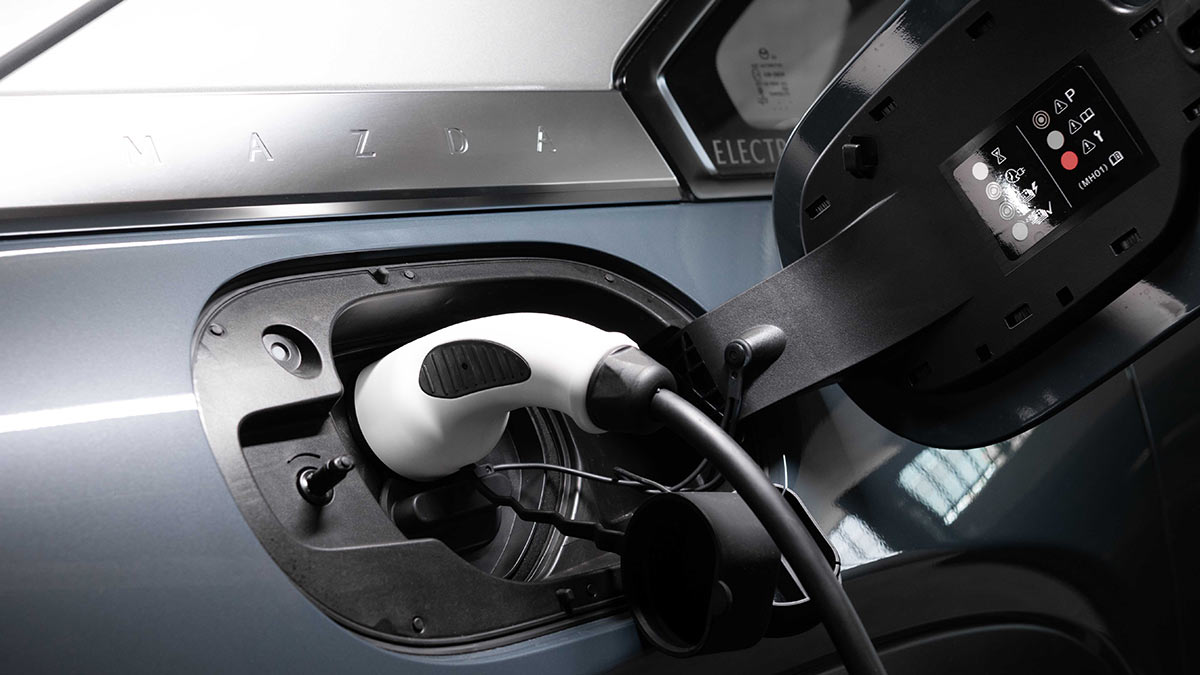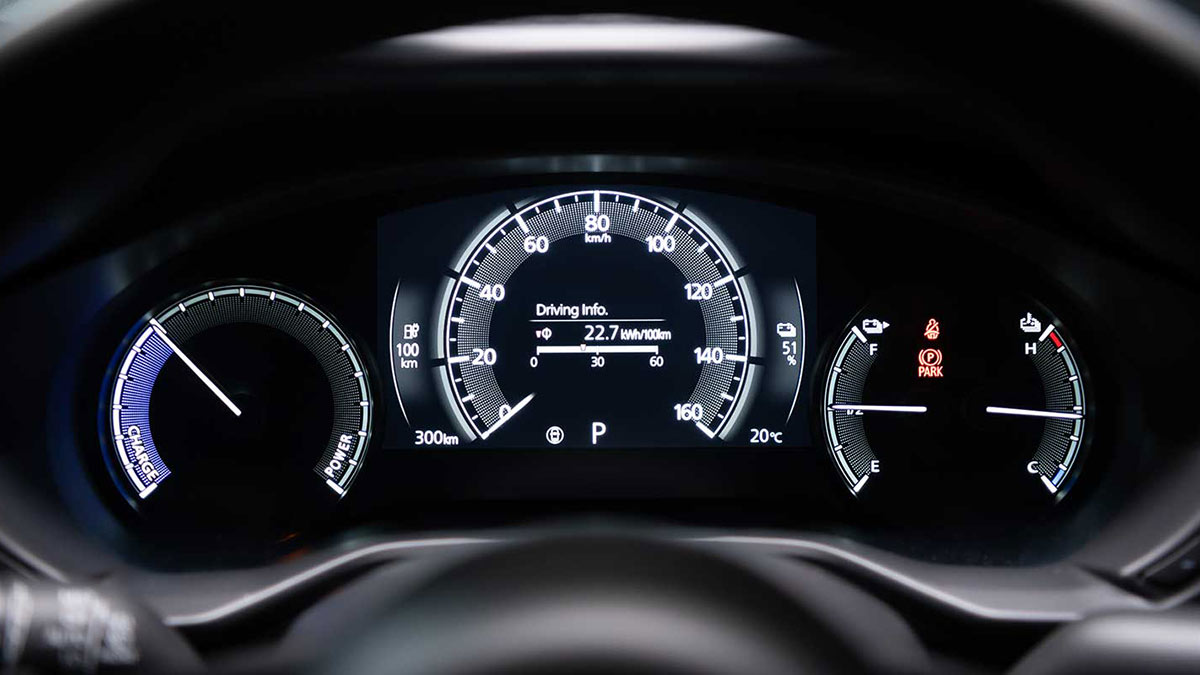The Foton Tunland joins Australia's dual-cab ute market as an affordable mild-hybrid diesel under $50,000, offering strong capability against tough competition.
First drive: 2021 Mazda MX-30 Electric launch review

Tim Nicholson plugs in with a first drive of the all-new Mazda MX-30 Electric.
Mazda’s first fully electric production car, the MX-30 Electric, has made its Australian debut ahead of an on-sale date in late August. The battery-electric version follows the March launch of the mild-hybrid MX-30. The MX-30 is Mazda’s first salvo in its global plan that will see 25 per cent of its model range fully electric by 2030. That includes five hybrids, five plug-in hybrids and three EVs in the range by 2025.
Mazda is expecting modest sales for the MX-30 Electric, with early adopters, design-focused and environmentally aware young urbanites the clear target, thanks to a bold design and sustainable cabin materials.
In launching the new model, Mazda Australia managing director, Vinesh Bhindi said he would need to see more government support before the Australian model range would hit the 25 per cent target. He called on the federal government to develop an action plan to avoid the complexities of state-by-state electric vehicle taxes and incentives.
In this article
Tim Nicholson's review of Mazda’s MX-30 Electric.
What do you get for the price?
Unlike the MX-30 Mild Hybrid, which comes in three model grades, the MX-30 Electric is available in just one generously specified grade, the Astina. Pricing is set at $65,490 before on-road costs, $25,000 more than the MX-30 Mild Hybrid Astina and about $20,000 more than Australia's cheapest EV, the MG ZS. But it's in the ballpark of two other all-electric SUVs, the recently launched Kia Niro Electric Sport ($65,990) and Hyundai Kona Electric Highlander ($66,000).
The Mazda has a more premium look and feel than its Korean competitors, but it trails behind when it comes to driving range. The MX-30 has a WLTP-cycle range of 200km, while the Kia and Hyundai have a range of 455km and 484km, respectively.
Mazda's got loads of inclusions, with a standard kit including a sunroof, keyless entry and start, power-folding and heated exterior mirrors, auto-dimming rear-view mirror, heated front seats, 10-way power-adjustable driver's seat with memory function, 12-speaker Bose audio system, wireless charger, and an 8.8-inch multimedia screen with Apple CarPlay/Android Auto, DAB+ digital radio and satellite navigation.
How safe is it?
The MX-30 Electric carries the same 5-star crash safety rating as the Mild Hybrid version, tested against ANCAP’s tough 2020 protocols. It has a lengthy list of standard safety gear and driver aids, including front autonomous emergency braking (AEB) with pedestrian and cyclist detection, rear AEB, front and rear cross-traffic alert, traffic sign recognition, reversing camera, lane-keeping aid, lane departure warning, blind-spot monitor, and driver attention alert.
What is it like inside?
Like the Mild Hybrid, the MX-30 Electric features sustainable materials inside. Partly recycled material is used for the fabric on the seats, a grey felt-like material on the inner door panels is made from recycled PET bottles, and salvaged cork is used for the centre console. That’s a cool nod to Mazda’s heritage as a cork manufacturer in the 1920s. Rather than simply proving a point about sustainability, each of these materials adds to the overall premium feel of the MX-30’s interior.
In typical Mazda fashion, the MX-30 has a minimal, clean interior design, with high-quality touch points. It features a ‘floating’ centre console, with the gear shifter and multimedia controls sitting high up, allowing for a larger storage space underneath. Mazda now leads its mainstream rivals when it comes to interior quality.
The seats are comfortable, and the cabin is well insulated from outside noise. There’s a function that uses the audio system to simulate the sound of drivetrain load, so it’s not completely silent.
While there are few complaints from the driver’s seat, the same can’t be said for the second row. The rearward-opening freestyle doors that reference the iconic Mazda RX-8 sportscar are a design highlight, but they impact functionality. It can be tricky for taller folk getting in and out when compared with a car with conventional rear doors. And the tiny rear-door windows result in minimal light in the second row.
The Electric has the same 311-litre boot capacity as the Mild Hybrid, which is only six litres less than the more conventional Mazda CX-30 small SUV. It’s also less than the Hyundai Kona Electric (332L) and Kia Niro Electric (451L).
What is under the bonnet?
The MX-30 is powered by an electric motor delivering 107kW of power and 271Nm of torque, paired with a 35.5kWh lithium-ion battery with a maximum charge rate of 50kW. It is front-wheel drive and uses a single speed reduction gear transmission.
It rides on 18-inch alloy wheels and features a MacPherson strut front and torsion beam rear suspension setup.
Is it efficient?
Mazda quotes an electric energy consumption figure of 18.5kWh/100km. We ended our brief urban launch drive with 19kWh/100km.
The 200km driving range is less than all of its direct EV rivals, including the MG ZS EV (263km). The various levels of regenerative braking can be adjusted using steering wheel paddle shifters. This helps recoup some energy lost when driving and it worked well on our drive. Following our 62km drive route, we had used just 52km of range.
The MX-30 Electric uses a type 2 CCS charging plug and it comes with a charging cable as standard. Charging the battery from 20-80 per cent using a 50kW public fast charger takes 36 minutes. It takes three hours for the same amount of charge when connected to a 6.6kW home charging dock, and nine hours when plugged into a regular 240-volt, 10-amp domestic power point.

Interior view of the Mazda MX-30 Electric.
How does it drive?
We only had limited time behind the wheel at the media launch, so extensive drive impressions will have to wait for a full road test review.
Acceleration is usually pretty brisk in an EV, thanks to the instant torque. The MX-30 covers the 0-100km/h dash in 9.7 seconds, which is fine, but it’s slower than the MG ZS EV, Nissan Leaf and Hyundai Kona Electric.
Mazda says it opted for a smaller battery pack with less range so it could be neatly housed under the floor, aiding weight distribution for improved handling. What you lose on driving range you gain in driver enjoyment. The MX-30 offers sharp handling and loads of grip when leaning into corners, aided by precise steering and Mazda’s torque vectoring system that enhances traction and grip.
The MX-30’s low-speed ride on urban roads is comfortable and well sorted, but we can’t tell you what’s it’s like on highways or b-roads just yet.
Thankfully Mazda has engineered its first EV to be just as engaging to drive as its other models.
The verdict
The striking design, recycled cabin materials and electric powertrain will attract buyers drawn to interesting design and sustainable motoring. But if you are looking for a conventional EV with a functional second row and decent driving range, maybe check out one of the MX-30’s rivals.
Mazda’s evolving model range will soon include EVs that can drive longer distances, but for now, its first EV is more at home in an urban environment.





